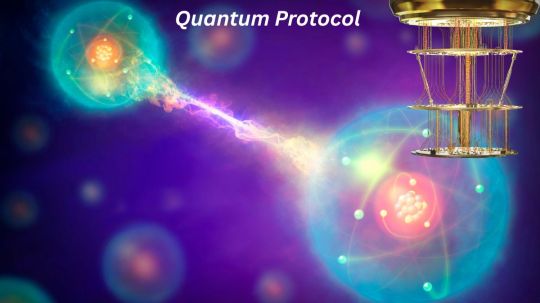#QuantumSecureDirectCommunication
Explore tagged Tumblr posts
Text
Quantum Protocol Secures Quantum Communication Using NDD

Quantum Protocol
Secure Quantum Dialogue Protocol Uses Entangled Qubit States
Researchers discovered a new quantum protocol that leverages entangled quantum states to allow parties to safely “dialogue” in quantum communication, improving security. The novel protocol, described in “Quantum dialogue through non-destructive discrimination of cluster state,” uses five-qubit cluster states and NDD to communicate information safely and effectively.
Mandar Thatte, Shreya Banerjee, and Prasanta K. Panigrahi from the Centre for Quantum Science and Technology at Siksha ‘O’ Anusandhan presented the study on safe data transfer with modern cryptography. This quantum technique exploits entangled quantum states' unique properties to overcome classical methods.
A key novelty of the quantum protocol is the use of NDD. NDD allows quantum state measurements without damaging entanglement, unlike traditional quantum measurements that collapse the superposition of states. Quantum correlations facilitate state reuse, allowing several communication cycles from the same entangled resource. NDD uses measurements to distinguish orthogonal quantum states without breaking the system's entanglement. NDD state is measured using ancilla qubits.
The quantum protocol uses stabilisers for single-qubit error correction to increase communication reliability. Quantum systems are noisy and decoherent, hence real-world applications require error correction. This method reduces errors without extra qubits, making it easier to deploy in quantum resource-constrained systems. Cluster states stabilise, making them useful for error correction. No recurring approaches are needed to rectify any qubit problem using the recommended solution.
Security assessments show the protocol is attack-resistant. The method mitigates quantum communication network flaws to secure sent data. The protocol is immune to passive attacks and leaks since Eve is uninformed of the interim state. Randomly inserting decoy qubits to detect Eve protects the quantum protocol from intercept-resend attacks. For her interaction to go unnoticed, Eve must depart Bob and Eve's combined state as a product state without understanding the encoded message.
Scalability is another feature of the quantum protocol. Expanding to n-qubit cluster states, entangled states with an indefinite number of qubits, supports larger networks and more bandwidth. Minimum for n-bit quantum chat is n-qubit cluster state.
Quantum Secure Direct Communication (QSDC) allows message decoding without classical communication. Alice and Bob exchange five-qubit cluster state copies. Alice encodes her message by changing her three qubits' states into one of 32 orthogonal states using unitary operations. Bob can decode the message after applying NDD to the received state since the ancilla measurement result shows him the transmitted state. Bob can use unitary operations to encode and convey his message to Alice, who will decode it using NDD. This process establishes “dialogue”.
An encoding uses unitary operations with a group theoretic structure to ensure that different encodings create different orthogonal states. Alice encrypts a 5-bit message on three qubits, creating 32 states.
The protocol's 40% efficiency for the 5-qubit situation is due to the inclusion of ancilla and decoy qubits, which improve security by avoiding classical state broadcasts.
The researchers implemented the protocol using quantum hardware like the ibm_sherbrooke backend to demonstrate that predicted ancilla outcomes are seen even with noise.
This breakthrough addresses scalability, error correction, and entanglement preservation, enabling realistic, secure quantum communication networks.
#QuantumProtocol#QuantumDialogueProtocol#nondestructivediscrimination#QuantumSecureDirectCommunication#NDD#QuantumProtocolSecures#technology#technews#technologynews#news#govindhtech
0 notes